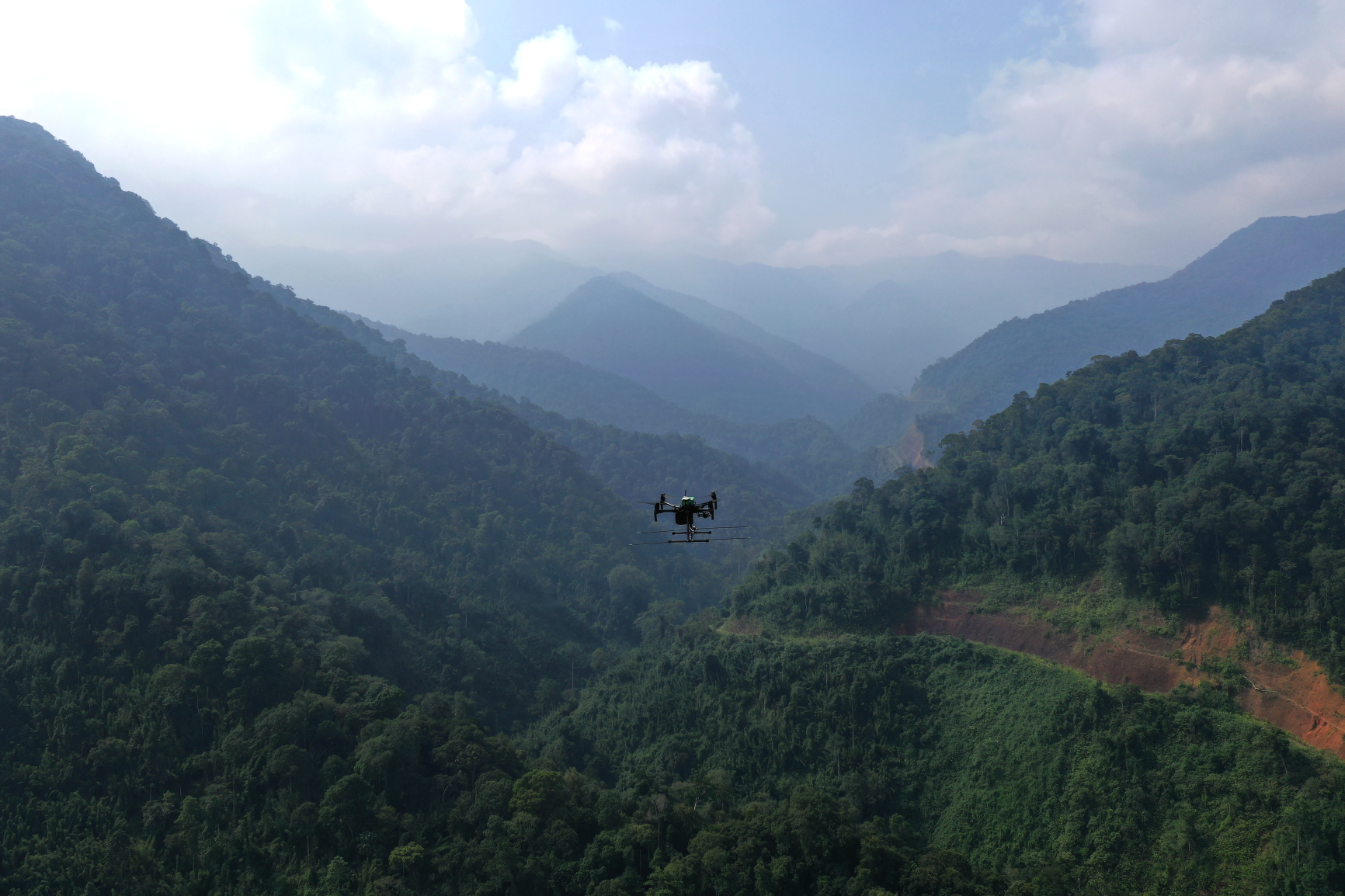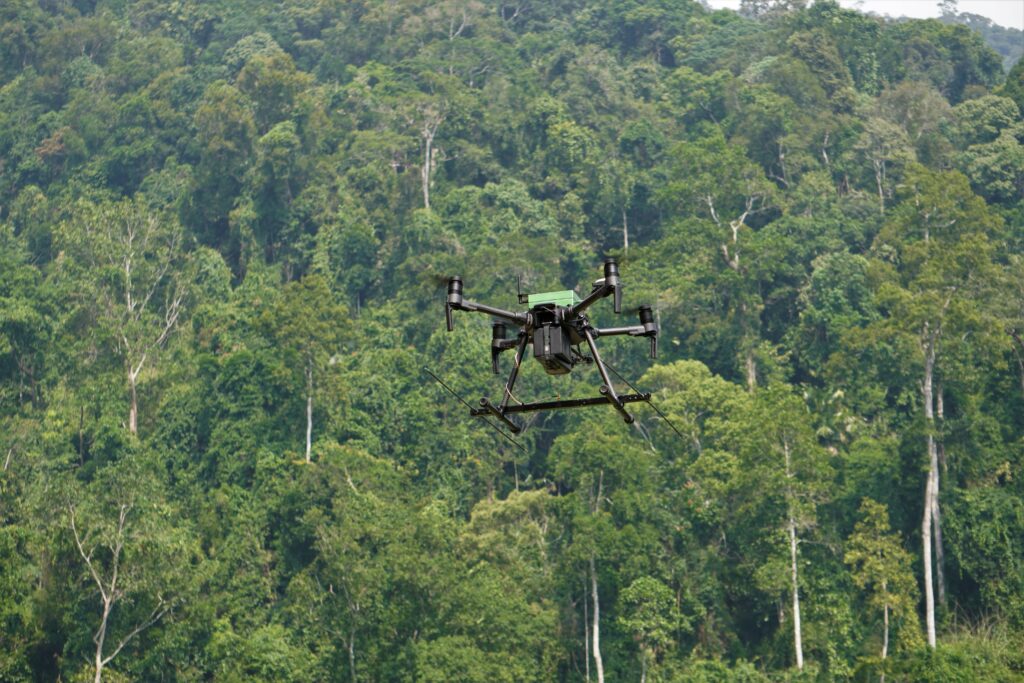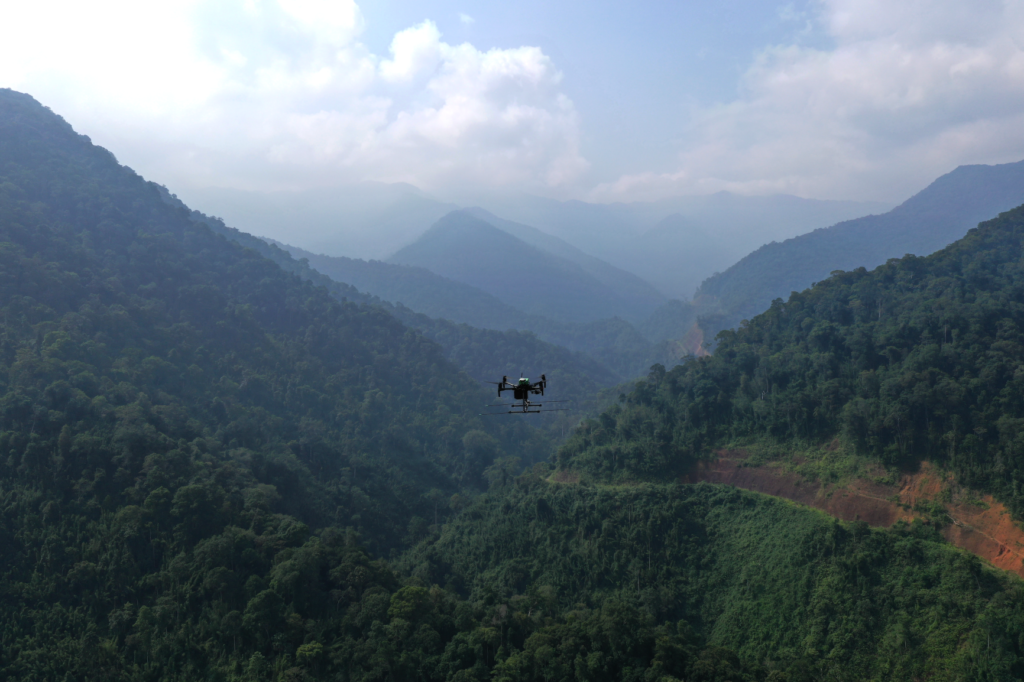
Insights: Flying your drone in the mountains
5 things you need to know when flying your drone in the mountains
5 things you need to know when flying your drone in the mountains
Drones have transformed environmental research by making it easier than ever before to access challenging landscapes—including rugged mountain terrain. But flying in mountains at high altitudes can be more complex than flying your drone in open, flat cleared areas. Here are five things you need to know when flying your drone in the mountains.
1. Altitude will affect your drone’s performance
As altitude increases, air pressure drops. This pressure change occurs for two reasons: firstly, gravity pulls air as close to the Earth’s surface as possible; secondly, the air is less dense at higher altitudes because there are fewer gas molecules.
At heights with lower air pressure, the drone will find it harder to generate the lift required to fly. Because the air is less dense, the propellers have to work harder to force the necessary amount of air downwards to hover, resulting in increased battery consumption. Also keep in mind that air temperatures will be colder at higher altitudes, which will further affect your battery’s performance.
To determine the maximum elevation your drone can reach, look for its ‘Maximum Service Ceiling’, which is the maximum height manufacturers recommend launching the drone from. For DJI drones, this height is typically 4,000 – 6,000 metres (13,123 – 19,685 feet). You can find more information here.
2. Mountains can cause radio signal bounce
Anyone who’s tried to radio-track wildlife in the mountains knows how challenging following a radio signal can be. Because radio waves travel line-of-sight, they can be easily blocked or bounced by mountains. This also has a few important implications for your drone, which relies on receiving a radio signal from the controller. Firstly, your drone will lose signal completely if you fly the drone behind a mountain. Secondly, surrounding mountains or tall dense vegetation might create interference with the radio signal, making it harder for the drone to pick up the signal, thereby limiting its flight range with reliable communications. If you are tempted to see over the next ridge, then just make sure you can still see the drone as you lift it up while making sure you don’t go too far and lose sight and communication with the drone. Also, watch out for eagles and other raptors who also love to soar above the ridges too!

3. Weather will play a bigger role
Weather systems in the mountains are notoriously volatile. Winds generally reach higher speeds and create more turbulence, and the weather can turn unexpectedly, so it’s even more important to pay attention to the forecast at high altitudes.
It’s also important to learn how air currents work as they can be more challenging to navigate in the mountains. Generally speaking, each mountain will have an updraft side (where the air current moves upwards) and a downdraft side (where the wind pushes downwards). If either of these is extreme, it can make flying at a steady altitude difficult.
4. Drones must be flown below 400 feet
In the United States and Australia, recreational drones cannot legally be flown higher than 400 feet above ground level. When flying in steep mountainous terrain, you may find yourself following the mountain range up, or flying down below the take-off point. When flying down below the take-off point into a ravine or valley, be extra vigilant that you have control of your drone since some don’t respond well to flights where the altitude becomes negative and can result in unexpected drone flight responses. If you need to fly higher than 400ft above the ground, you’ll need special permission from the FAA or CASA to prevent hazards for piloted aircraft.
5. All other drone restrictions still apply
Being in the mountains can feel remote, but it’s important to remember the same drone laws apply. Keep your drone within visual line-of-sight, stay away from controlled airspace and other restricted areas (like official U.S. Wilderness Areas) and only fly your drone during the day unless you have the authorisation to do otherwise.
Contact Wildlife Drones to find out how drones could help with your next conservation project in the mountains.


